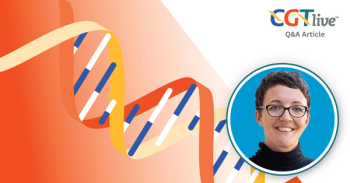
RGX-314 Shows Promise as Gene Therapy for Wet AMD
Data from a phase 1/2a study show RGX-314, a gene therapy from RegenX, was well tolerated and improved visual acuity in patients.
Jeffrey Heier, MD
With presentations on RGX-314 and ADVM-022 headlining the late breaking session, gene therapy was a hot topic on the first day of the
Presented by Jeffrey Heier, MD, co-president and medical director of Ophthalmic Consultants of Boston, data from cohorts 1 through 5 of the phase 1/2a study highlighted the safety and efficacy of RGX-314 for the treatment of
“In summary, sub retinal RGX-314 was well tolerated with dose-dependent increases and ocular protein and in cohort 5 there was a high clinical response—with 3 quarters of patients injection-free at 5 to 6 months,” Heier said.
Data presented at AAO 2019 centered around the 42 individuals included in the 5 dose cohorts examined during the study. Patients with neovascular AMD who had been previously treated with and demonstrated a need for current anti-VEGF therapy. Heier also noted patients needed to have a level of response to anti-VEGF therapy at screening. 


Patients in the trial received RGX-314 subretinally and were followed monthly by study investigators to evaluate safety and need for rescue therapy. Mean age of the study population was 80, mean baseline BCVA was 55.7, and mean baseline OCT was 399.1.
Heier noted patients involved in the study could receive anti-VEGF injections if negative changes in vision occurred during the study period. In regard to prior therapy, the mean time since first anti-VEGF injection was 56.1 months, the mean number of injections since diagnosis was 33.1, and the average annualized injections prior to entry was 9.6.
Trial results revealed RGX-314 was well tolerated in all 5 study cohorts—with no drug related serious adverse events(SAEs) and no observed clinically determined immune responses. Heier noted two ocular procedure-related SAEs occurred, which were a peripheral retinal detachment an endophthalmitis post aqueous sample collection.
In cohort 3, which included 6 patients who received a mean of 2.6 injections annually, the mean gain in BCVA was 9 letters and central retinal thickness(CRT) decreased by 40 µm at 1.5 years. Of patients in cohort 3 who did not require anti-VEGF treatments(50%), investigators noted a mean increase in BCVA of 11 letters and a decrease in CRT of 21 µm at 1.5 years.
In cohort 5, the mean BCVA improved by 4 letters and CRT decreased by 68 µm at month 5. Heier noted 9 of the 12 patients in cohort 5 remained injection free at 5 to 6 months and this group had the highest clinical response. In patients from cohort 5 who did not receive injections, Heier pointed out the mean gain in BCVA was 5 letters and the mean decrease in CRT was 80 µm.
This study, “Results of Cohorts 1-5 for the RGX-314 Phase I/IIa Study of Gene Therapy for Neovascular Wet AMD,” was presented by Jeffrey Heier, MD, at AAO 2019.
Newsletter
Stay at the forefront of cutting-edge science with CGT—your direct line to expert insights, breakthrough data, and real-time coverage of the latest advancements in cell and gene therapy.

























